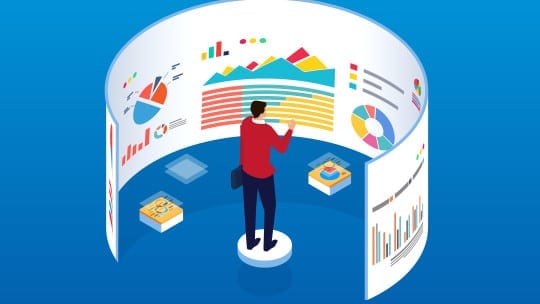
Sue Grafton, author of the alphabet mysteries, once wrote, “Ideas are easy. It's the execution of ideas that really separates the sheep from the goats.” This article is not about the idea or a theoretical construct of corporate reputation. Rather, it is about what you need do to execute a corporate reputation study.
One thing I have learned is that reputation is not owned by the corporation, but rather it resides in the hearts and minds of stakeholders. Accordingly, the best way to study reputation is to talk to stakeholders about what they know and think about the corporation. (Bias alert: I am a marketing researcher by training, so surveys are my go-to solution. If you are into media analysis or social media tracking, you may favor a different approach.)
So how do you measure corporate reputation?
1. Set Objectives. What outcomes do you want to achieve?
- Gain a full understanding of the corporation’s reputation by studying selected stakeholders’ knowledge about, evaluations of and likelihood to engage in behaviors that support the corporation.
- Provide meaningful insights which can help in developing communications strategies and tactics.
- Establish benchmarks to measure progress over time.
2. Selecting Stakeholders. Any corporation has myriad stakeholders who give the corporation permission to do business. These include the investment community, government, employees, customers, suppliers, the media, and the citizens of countries in which the corporation operates. Each of these groups has segments that may need to be looked at separately. For example, the investment community has sell-side and buy-side analysts, portfolio managers, retail brokers and individual investors to name a few.
Some stakeholders are easy to access and some are not. Often the default approach is to interview the general public—citizens or consumers. This is cost effective and relatively easy. But the public is not the most important stakeholder group for many companies. Large corporate customers or influential securities analysts or government regulators may be far more critical. Identifying and interviewing these elite stakeholders is a more daunting, but doable task.
There are instances where creativity is needed in defining stakeholders. For a company that manufacture 60.000 consumer and industrial products, it would have been impossible to define all customer groups. Accordingly, for a global reputation study, customers were defined as individuals in executive or managerial positions with above median income for the country.
3. Developing the Questionnaire. Without getting in to the esoterica of questionnaire construction, there are basic things we need to ask stakeholders. It is a best practice to use essentially the same line of inquiry across stakeholder groups and to ask questions about the corporation and 2-5 competitors.
- Awareness – if people have never heard of the corporation, it has no reputation.
- Familiarity – how much do people feel they know about the company.
- Perceived strengths and weaknesses – in their own words, what do people think about the company? Often verbatim comments can provide texture that rating scale questions cannot.
- Ratings on key attributes – there is not room here to talk about how to generate attributes to use. But they should be a mix of positives and a few negatives. Also, they should be written in a way that will lead to differentiation between corporations. Something namby pamby like “Makes quality products” will not distinguish between major corporations. Importance of attributes may either be asked or derived through a simple correlation analysis.
- Likelihood to support the corporation – by recommending products, employment, investing in the stock and other behaviors.
- Sometimes, it is helpful to ask whether certain facts are known about a company to determine whether basic knowledge about the company is up to date or out of date. For example, is GE only known for light bulbs and appliances or is it also known for locomotives, power generation and other industrial businesses?
4. Data Collection. Methods of interviewing vary by stakeholder group and will be discussed in another article.
5. Cross tabulations should be run so all stakeholder groups and subsegments can be easily compared.
6. Analyzing reputation studies is like unpeeling an onion. The goal is to uncover key issues and see what actions are suggested.
- Awareness – if awareness is low, the key action step is to get the company known. Corporate advertising stressing the name might be called for.
- Familiarity - people more familiar with a company tend to be more favorable. If this is not the case, it is a sign of reputational trouble.
- Strengths and weaknesses – are perceptions of the company scattered or coalesced? Are strong positives or negatives expressed or are perceptions bland?
- Attributes – how does the corporation perform on the most important attributes? The Holy Grail is to discover one or two attributes that are of high importance and on which the corporation is outperforming its competition. Usually, the differences are more nuanced.
- Behavior – are there any barriers to acting in ways that support the corporation’s strategic goals? What are the drivers of different behaviors? For example, drivers of employment recommendations may be different from drivers of investment recommendations.
7. Reporting – Communicating results and implications should be crisp and straightforward. Pulling punches does not help the corporation address critical issues.
The field of corporate reputation has been my passion for many years. Make it your own. Go forth and measure.
John Gilfeather is president of John Gilfeather & Associates and a founding member of the Institute for Public Relations Measurement Commission.
